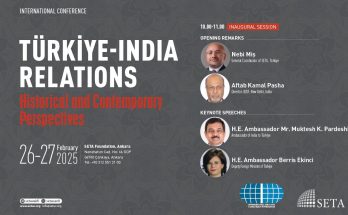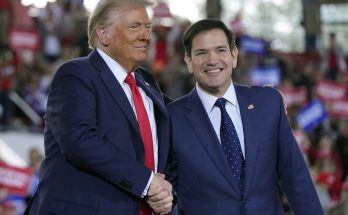 WASHINGTON: The new normal in India-US relations is no longer a rhetorical flourish; it’s the all-too-real real context of the current play of India-US relations that will frame Prime Minister Manmohan Singh’s latest meeting with US President Barack Obama in Washington this week.
WASHINGTON: The new normal in India-US relations is no longer a rhetorical flourish; it’s the all-too-real real context of the current play of India-US relations that will frame Prime Minister Manmohan Singh’s latest meeting with US President Barack Obama in Washington this week.
Then and Now
 The buzz and hype that surrounded his last meeting with Obama in Washington is palpably missing. In 2009, all roads in Washington led to the White House where a beaming Obama hosted the most-talked about first state dinner of his presidency for his honoured Indian guest. There was a touch of magic in the rarefied air inside the majestic white tent pitched on the South Lawns of the White House, as this writer saw first-hand, where under the starry night Obama waxed lyrical.
The buzz and hype that surrounded his last meeting with Obama in Washington is palpably missing. In 2009, all roads in Washington led to the White House where a beaming Obama hosted the most-talked about first state dinner of his presidency for his honoured Indian guest. There was a touch of magic in the rarefied air inside the majestic white tent pitched on the South Lawns of the White House, as this writer saw first-hand, where under the starry night Obama waxed lyrical.
 Much bonhomie and quasi-poetic sentiments flowed, and enveloped a star-studded guest list comprising Hollywood moguls, billionaire tycoons, powerful senators and eminent Indian Americans. “Under the stars, tonight we celebrate the friendship between India and the US. We celebrate the growing partnership between India and the US,” said Obama, toasting the Indian prime minister and feting him in accented Hindi: “Aapka Swagat Hai (you are welcome).
Much bonhomie and quasi-poetic sentiments flowed, and enveloped a star-studded guest list comprising Hollywood moguls, billionaire tycoons, powerful senators and eminent Indian Americans. “Under the stars, tonight we celebrate the friendship between India and the US. We celebrate the growing partnership between India and the US,” said Obama, toasting the Indian prime minister and feting him in accented Hindi: “Aapka Swagat Hai (you are welcome).
The nuclear deal was then a dream waiting to turn real, and not a still-born baby, as it began to look like in the next few years. The Indian economy was clocking 8 per cent annual growth even as the US was struggling with a festering downturn with people in America asking President Obama to put the Main Street before the Wall Street.
Four years down the line, a curious reversal of fortunes has taken place – the US economy is on an upswing, while the India Story is on a downslide, so goes the plaint. This narrative of the India-US relations losing its shine has become the new cliché to define the emerging landscape of what was once eloquently conjured up by President Obama as “the defining partnership of the 21st century.”
Moving beyond Hype
But don’t get taken in: this description is superficially seductive and smacks of teenage angst at a love story gone awry. The buzz and seductive chatter may be missing, and a new whine may have crept into articulation of the India-US relations, but contrary to sceptical sniggers, the India-US relations have diversified and acquired greater strategic character. There are at least 32 structured dialogues between ministers and officials of the two countries. And these dialogues encompass a splendid array of diverse areas, ranging from trade and investment, civil nuclear energy, counter-terrorism to clean energy, education, innovation and women empowerment.
A Small Step for Big Deal
 And yes, there is good news to report on the front of the India-US nuclear deal. Eight years after Manmohan Singh and George Bush took a leap of faith to seal a landmark nuclear deal that brought India inside the global nuclear tent, the big deal appears to have decisively moved beyond the shadow of infinite demurral and prevarication, engendered by India’s civil nuclear liability law. In a small but significant step, the Nuclear Power Corporation of India Limited (NPCIL) and Westinghouse Electric Company are poised to seal an early works agreement this week, paving the way for the resumption of nuclear business with India. Some critics have griped that the pact could end up subverting the nuclear liability law, but India’s Foreign Minister Salman Khurshid and Foreign Secretary Sujatha Singh have made it clear there will be no dilution of the national law.
And yes, there is good news to report on the front of the India-US nuclear deal. Eight years after Manmohan Singh and George Bush took a leap of faith to seal a landmark nuclear deal that brought India inside the global nuclear tent, the big deal appears to have decisively moved beyond the shadow of infinite demurral and prevarication, engendered by India’s civil nuclear liability law. In a small but significant step, the Nuclear Power Corporation of India Limited (NPCIL) and Westinghouse Electric Company are poised to seal an early works agreement this week, paving the way for the resumption of nuclear business with India. Some critics have griped that the pact could end up subverting the nuclear liability law, but India’s Foreign Minister Salman Khurshid and Foreign Secretary Sujatha Singh have made it clear there will be no dilution of the national law.
Scaling up Defence Ties
The defence trade is another area that has seen the two sides shed their earlier diffidence and ambivalence. In a market traditionally dominated by Russia and other players like Israel and European companies, the US defence companies have been on a winning streak. Bilateral defence trade has escalated from virtually zero to $10 billion dollars and the defence ties are entering a new phase of qualitative transformation from mere buyer-seller relationship to co-development, joint design and co-production of cutting-edge military weaponry.
In a world propelled by trade winds, there have been some intermittent squalls and genuine differences over policy moves and perceived intentions behind them. While bilateral trade has shot up to over $100 billion, there have a steady stream of gripes from both sides. The US business lobbies and corporates, who played a key role in transforming the India-US relations, have now become vocal critics, writing letters to Senate panels and publicly voicing disillusion at policy paralysis and reforms stagnation in India. On the other hand, many in India feel that the US lobbies want both sides of their bread to be buttered, without giving much in bargain; they are sore that the US Senate immigration bill is threatening to derail the business model that has underpinned the success stories of Indian IT companies, bringing billions of dollars to India annually.
New Realism
True, there is long list of gripes, real and rhetorical, and there are genuine disagreements on a range of strategic issues like the attitude towards post-2014 Afghanistan and Iran that are not going to go away anytime soon. But the remarkable thing about the evolution of the India-US relations in the last decade is that there is sobering realism and flexibility whereby both sides have agreed to disagree on many issues without losing sight of the big picture of the India-US relations that brings manifold strategic gains for both countries.
The Big Picture
 Talking of the big picture, this will be the focus of the Manmohan Singh-Obama meeting on September 27, the last full-spectrum summit between the two leaders before India goes to the polls in May next year. In terms of deliverables, there are no headline hogging pacts on the table: at best, there could be a limited and symbolic commercial agreement between nuclear entities, and a pact on curtailing hydro-fluorocarbons (HFCs), on the lines between a recent pact between the US and China. The two leaders are also expected to underline the transformation of their defence ties and some defence deals could be unveiled after the talks. Put together, they don’t add up to anything spectacular, but where the talks could score is to reinforce and rebuild the edifice of the India-US relationship in the next few decades.
Talking of the big picture, this will be the focus of the Manmohan Singh-Obama meeting on September 27, the last full-spectrum summit between the two leaders before India goes to the polls in May next year. In terms of deliverables, there are no headline hogging pacts on the table: at best, there could be a limited and symbolic commercial agreement between nuclear entities, and a pact on curtailing hydro-fluorocarbons (HFCs), on the lines between a recent pact between the US and China. The two leaders are also expected to underline the transformation of their defence ties and some defence deals could be unveiled after the talks. Put together, they don’t add up to anything spectacular, but where the talks could score is to reinforce and rebuild the edifice of the India-US relationship in the next few decades.
There may not be one big-bang idea, but a cluster of two-three big ideas that will map out the future of this critical relationship that is still brimming with possibilities despite the recent so-called drift and plateauing of ties. There are only hints and guesses, but one can sense a broad outline of where the action will be in the future. Refurbishing and scaling up economic relationship is not exactly the big-bang idea, but imagine India-US bilateral trade going up to $500 billion by 2015-2016, and one can sense this could be another defining milestone that will bind the two countries closer than before. The burgeoning defence ties, along with the concomitant bridging of trust inherent in this process, is another force-multiplier. Thirdly, on the strategic plane, there got to be a widening of areas of convergence: the East Asia theatre and the rise of China offer myriad possibilities of closer conversation and will prompt the both countries to shed minor differences in pursuit of a more inclusive regional and global order. Tanvi Madan, director of the India Project at the Brookings Institution, has rightfully observed that “the construction of a substantial partnership between the two nations won’t be easy; there will probably be delays and cost overruns.” In the same breath, she says: “The two governments have, nonetheless, decided that it is worth building…. It will also require heavy-lifting from the private sector and public, constituencies who benefit from the relationship to be vocal, and the two sides not to shy away from talking transactions.”
The Way Ahead
Taking a realistic broad brushstroke picture, the India-US relations are, therefore, headed for a more broad-based and enduring future where both partners do not look for incandescent highs all the time, but seek quiet purposefulness and comfort of working together for a set of common goals and objectives. Looking ahead to the future of the India-US relations, the restless romantics looking for blockbuster headlines may, therefore, feel disappointed, but the realists will revel in the fecund normality of doing thing together, sans drama and hype, agreeing to disagree, but never losing sight of some plain facts that have transformed the hitherto estranged democracies into engaged democracies and long-term strategic partners.
 (Manish Chand is Editor-in-Chief of India Writes, www.indiawrites.org, an online magazine and journal focused on international affairs, the India Story, emerging powers and dialogue among cultures. He is in Washington to report and analyse Indian Prime Minister Manmohan Singh’s visit to the US).
(Manish Chand is Editor-in-Chief of India Writes, www.indiawrites.org, an online magazine and journal focused on international affairs, the India Story, emerging powers and dialogue among cultures. He is in Washington to report and analyse Indian Prime Minister Manmohan Singh’s visit to the US).
Author Profile

- Manish Chand is Founder-CEO and Editor-in-Chief of India Writes Network (www.indiawrites.org) and India and World, a pioneering magazine focused on international affairs. He is CEO/Director of TGII Media Private Limited, an India-based media, publishing, research and consultancy company.
Latest entries
 India and the WorldFebruary 14, 2025Modi-Trump COMPACT: India, US launch MEGA partnership for 21st century
India and the WorldFebruary 14, 2025Modi-Trump COMPACT: India, US launch MEGA partnership for 21st century India and the WorldJanuary 28, 2025Modi, Trump talk global peace, focus on strategic connect
India and the WorldJanuary 28, 2025Modi, Trump talk global peace, focus on strategic connect India and the WorldDecember 16, 2024Kazan Spirit: India, China SRs to hold talks in Beijing
India and the WorldDecember 16, 2024Kazan Spirit: India, China SRs to hold talks in Beijing India and the WorldDecember 10, 2024Malta backs stronger ties, sees India as a rising global power: Envoy
India and the WorldDecember 10, 2024Malta backs stronger ties, sees India as a rising global power: Envoy







